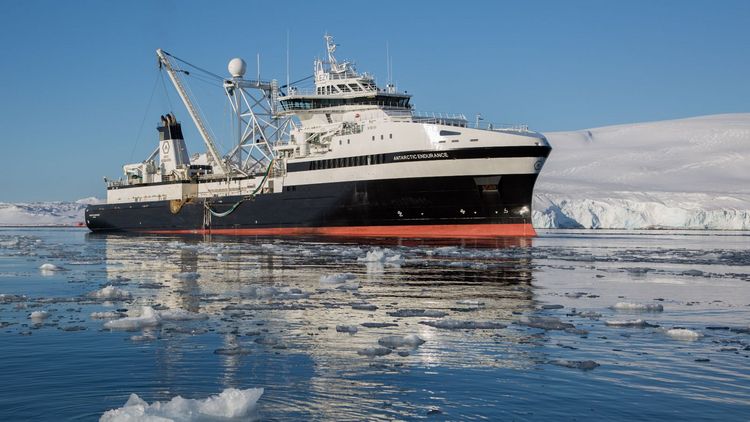Back from the Antarctic Ocean to Germany under pandemic conditions
Since 22 February, Prof. Dr. Bettina Meyer was on the move for science in the Southern Polar Sea aboard the Norwegian krill harvesting vessel ANTARCTIC ENDURANCE. Here Meyer, holder of the joint professorship „Biodiversity and Biological Processes in Polar Oceans“ at the University of Oldenburg, together with the Alfred Wegener Institute, Helmholtz Centre for Polar and Marine Research, was taken by surprise by the Corona pandemic, together with her colleagues Lukas Hüppe and Dr. Ryan Driscoll.
Although there was little risk of infection in those far reaches at that time, it suddenly had become utterly ambiguous how to get back home to Germany. Recently, the ICBM came across some particulars of the odyssey of Prof. Meyer and her colleagues, which lasted more than a fortnight.
On 18 April Meyer and her colleagues were due to leave the ANTARCTIC ENDURANCE and the region of the Bransfield Strait on board a 450 feet supply vessel. After the krill-catching trawlers had been supplied with fuel and fresh food by the freighter, the cargo ship should take the krill meal, produced aboard the trawlers, to Montevideo, Uruguay. Onshore, the meal was to be converted into dietary supplements. „The freighter was to take us in a stop en route to the Falkland Islands off the coast of Argentina“, Meyer says.
But prior to that, eleven Uruguayan scientists still were waiting to be picked up. They were stuck in an Uruguayan antarctic scientific research station on King George Island. When the freighter had arrived at a nearby bay, the Uruguayans were ferried to the vessel by Zodiac dinghi. Eventually, the rising wind prevented the vessel from leaving the bay. Actually, the upsurging gale forced the ship into the shallow waters of the bay, gradually running the stern aground.
„Another day later, one of the Krill-catching vessels came to our aid“, Prof. Meyer portrays the situation. Initially, the underwater ship was inspected by ROV to make sure that there were no leaks as well as damages to the propellers or the rudder. „Fortunately, the ship had stuck on sand instead of rock, and so everything was okay“. Two days later, the cargo vessel was towed to deeper water and the journey went on.
Upon reaching the Falklands, a Royal Air Force military plane eventually took the three scientists to a military base near London. Via Heathrow and Frankfurt Prof. Meyer got back to Hamburg. On the 15th day of the journey, it was the 3 May already, she reached home by train safe and sound.
(Changed: 12 Dec 2025)
| Kurz-URL:Shortlink: https://uol.de/p46546n4096en

![[Translate to English:]](/f/5/_processed_/3/2/csm_ICBM-Logo-transparent-_91fe1c6774.png)
